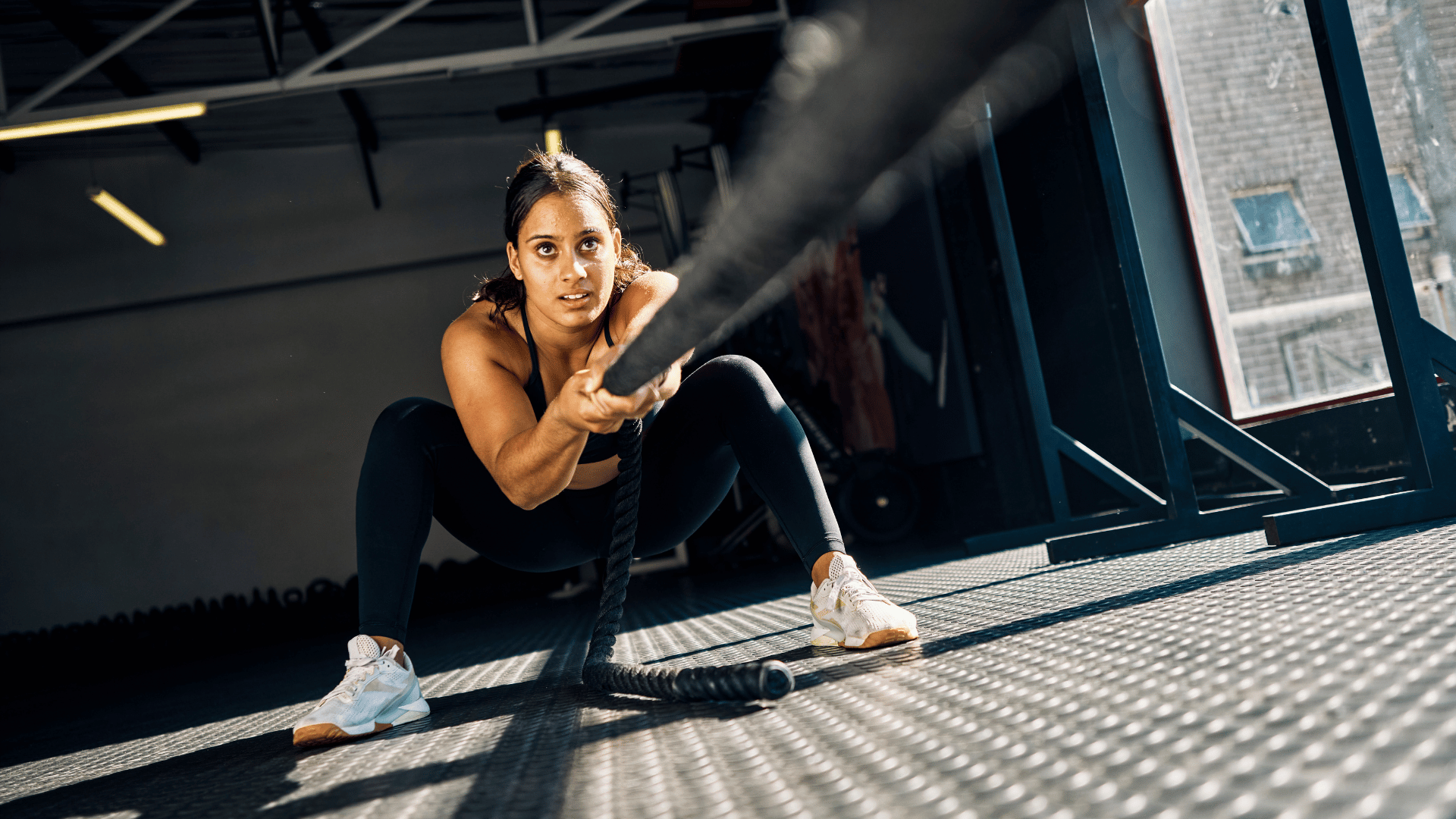Preventing Overuse Injuries in Long-Distance Running

Pure Sports Medicine
- 12 August, 2023
- Running
- 7 min read
Long distance running is a physically demanding sport that requires both mental resilience and physical fitness.

Whether you’re a seasoned marathoner or just starting your journey into the world of distance running, injury prevention is paramount.
Let’s explore the risk factors associated with overuse injuries in long distance running and the valuable preventative techniques to help you stay on track for success.
What is an overuse injury from exercise?
Overuse running injuries often happen when the body doesn’t have enough time to repair microtrauma in the muscles and connective tissues.
This is particularly true when runners push themselves to their limits without allowing for adequate recovery.
Various studies of recreational and competitive runners have estimated that a significant percentage of long-distance runners develop overuse injuries.
A 2019 study by S Winter at al., found that 54% of intermediate and 59% of slower long-distance runners developed running induced injuries in a 1-year period.
Gait Abnormalities and poor running form
An abnormal running gait (your manner or pattern of running) can be a result of biomechanical deficits, poor strength, and flexibility.
This can look like excessive or insufficient stride length or cadence (number of steps per minute), and excessive leaning from your torso (also referred to as the trunk).
For example, an overstride can increase the ground reaction forces and joint loading, which can contribute to injuries such as tibial stress fractures and anterior knee pathologies.
Understanding the Risk Factors of Running Injuries
Injury can result from a variety of factors, ranging from intrinsic factors such as biomechanical deficits to extrinsic factors such as improper training.
By understanding these risk factors, you can take proactive steps to mitigate them and enjoy your running journey without unnecessary setbacks.
Physiotherapists or Podiatrists are the best points of call in this instance. They can help you to find the weakness and create a targeted rehab plan to strengthen or correct that issue.
Biomechanical deficits such as Achilles tendonitis
Biomechanical deficits refer to deviations from the most favourable movement patterns and mechanics in the human body. So if your running form isn’t very good, over time this can cause an injury, and the longer it goes on for, the more difficult it is to change that habit.
Biomechanical deficits can play a significant role in the development of injuries, such as Achilles tendinopathy and stress fractures.
For example, if you’re feet collapse inward towards one another or the midline of the body (pronation), or misaligned hip and knee placement, it may mean that you’d be predisposed to a biomechanical injury.
Again, consulting a sports medicine specialist such as a Podiatrist or Physiotherapist for a thorough biomechanical assessment will help to identify any underlying deficits and imbalances. This way you can work on correcting your form and immediately decreasing your risk of injury.
Poor Strength and Flexibility
When you lack the necessary strength and flexibility, your body may be less prepared to withstand the physical demands of running. For example, weak muscles can become tired quicker, leading to a worsened running form.
Strong muscles can also help absorb the shock and impact forces you feel when you’re running, whereas weaker muscles may transfer more stress to joints and bones. For example, tight hamstrings can lead to stresses on the lower part of your spine, potentially causing lower back pain.
Inflexible muscles can also limit a joint’s range of motion, which may lead to other muscle groups needing to compensate and therefore taking on too much to withstand. Over time, this can result in injuries like strains, sprains, and ligament damage.
While inflexibility can lead to limited joint range of motion, it can also increase the risk of overstretching muscles, causing muscle strains.
To reduce the risk of these kinds of running-related injuries that are related to poor strength and flexibility, I recommend the following:
- Incorporate Strength Training in to your weekly routine
- Include regular strength training exercises to target major muscle groups, such as the core, legs, and hips.
- Work on your balance and stability with Pilates
- Sports such as Pilates can help you to improve your balance, stability, flexibility, and core strength by performing slow and controlled exercises which can also work to improve coordination and running form.
- Slowly increase the demands put on your body
- By gradually increasing the intensity and complexity of your strength training workouts you will continually challenge your muscles, whilst staying injury free.
- Include regular stretching in to your routine
- This will improve the flexibility of key muscle groups. Pay attention to muscles used most during running, such as the calves, hamstrings, quadriceps, and hip flexors.
- Look after your soft tissues
- Soft Tissue Therapy allows you to release the tension from tight or sore muscles. Sessions before and after long or demanding runs can help your body both prepare and recover. An ‘at-home’ technique is foam rolling as it allows you to perform self-myofascial release and can help to improve flexibility and reduce muscle tension. Although it’s always best to consult with a soft tissue therapist for the best advice.
- Don’t forget to warm-up and cool down
- Always warm-up with dynamic stretching before a run and cool down with static stretching afterward to maintain and improve flexibility.
By addressing poor strength and flexibility through targeted exercises and practices, you can reduce your risk of injury and improve your running performance.
Consulting with a physiotherapist or strength and conditioning coach can provide personalised guidance and ensure you’re addressing your specific weaknesses effectively.
Sudden Increases in Training Volume
One of the most significant contributors to common running injuries is a rapid increase in mileage or intensity.
Sudden increases in training volume, also known as “training spikes” or “overtraining,” can significantly increase your risk of injuries and negatively impact performance.
To avoid such issues, it’s essential to build up your training gradually, allowing your body to adapt to the increased demands over time.
Here’s how to do it:
- Establish a Baseline
- Start by evaluating your current fitness level and training routine. Determine your baseline in terms of mileage, intensity, and frequency.
- Develop a Structured Training Plan
- This should outline your weekly workouts, including the type of exercise (e.g., running, strength training), duration, and intensity.
- Gradual Progression
- Gradually increase one or more training variables at a time. These variables include mileage, intensity, duration, or frequency. The recommended increase is generally no more than 10% per week. For example, if you ran 10 miles this week, aim for around 11 miles next week. Consistency, patience, and a structured approach will help you reach your fitness or performance goals while keeping your body healthy and resilient.
- This is where Strength & Conditioning Coaches come in. They are specialists in creating these types of periodised training programs that are tailored to your goals, schedule, and lifestyle.
Recovery
Recovery is often underestimated or overlooked by many runners, but it plays a crucial role in preventing injuries.
Inadequate recovery can contribute to running injuries in a few ways.
The first is muscle fatigue. Without adequate recovery, muscles may not have sufficient time to repair and rebuild, leading to cumulative fatigue, weakness, and inflexibility.
Secondly it can affect your running form. As fatigue sets in due to insufficient recovery, running form tends to deteriorate. Poor form can lead to abnormal biomechanics.
It can also decrease your joints’ stability and control, making it easier for runners to experience joint-related injuries, such as ligament strains.
Chronic training without sufficient recovery can weaken the immune system, making runners more susceptible to illnesses. This can disrupt training schedules and negatively impact overall performance.
Lastly, it can also lead to chronic inflammation in the body, which is linked to a range of health issues and can hinder the healing process of minor injuries.
To prevent these types of running injuries caused by inadequate recovery, I recommend the following:
- Rest
- Incorporate rest days into your training schedule. Rest is essential for muscle repair and recovery. Listen to your body and take rest when needed.
- Active Recovery
- On rest days or recovery days, engage in light activities like walking, cycling, or yoga to promote circulation and ease muscle soreness.
- Sleep
- Ensure you’re getting enough quality sleep, as it’s crucial for the body’s recovery and repair processes.
- Eat well and hydrate
- Maintain a balanced diet and stay adequately hydrated to support the healing process.
- Again, take care of your soft tissues
- Consider using techniques like self-myofascial release, either with a Soft Tissue Therapist or a foam roller – or both! Getting regular massages will reduce muscle tension and improve circulation.
In summary, neglecting recovery can increase your risk of injuries and hinder performance. By prioritising recovery and listening to your body, you can enjoy a more sustainable and injury-free running experience.
Running surface
Overuse running injuries are often associated with repetitive stress on the body, and the choice of running surface can either exacerbate or mitigate this stress.
Running in the concrete jungle that is London can lead to higher impact forces on your body, as these surfaces provide minimal shock absorption. This increased impact can encourage overuse injuries, particularly in the lower limbs, such as stress fractures, joint wear and tear, and the dreaded plantar fasciitis.
Repeatedly running on firm surfaces can also encourage muscle fatigue, leading to changes in running form and biomechanics.
While it is tricky to avoid concrete in London, where possible, variety in surface is recommended, with softer surfaces, such as grass, trails, or running tracks being more forgiving on your body.
Additionally, running on softer surfaces can introduce variability in terrain, which can strengthen the stabilising muscles, improve balance, and reduce the risk of repetitive stress injuries.
Ultimately, you should consider your individual needs and preferences when selecting a running surface. Pay attention to how your body responds to different surfaces and adjust your training accordingly to minimise the risk of overuse injuries.
Again, if you’re insure, a Strength and Conditioning Coach can help advice you.
Improper Footwear
Using running shoes that lack appropriate support, cushioning, or an adequate fit can heighten the chances of sustaining injuries.
It is crucial to select the correct footwear that suits your running technique and the structure of your feet.
For instance, individuals with flatter feet generally benefit from footwear offering increased stability. Conversely, those with higher arches usually find greater shock absorption in ‘neutral’ trainers more suitable.
Consulting a Podiatrist to assess your foot type, gait and running style will help you to find the best footwear selection for you, your feet, and your running type.
Injury prevention is a key aspect of running that should not be overlooked.
By understanding the risk factors associated with long distance running injuries and implementing these preventative techniques, you can enjoy a long and successful running career without having to suffer any setbacks.
Remember that consistency in following these guidelines is important. It will help to ensure your passion for running remains a source of joy and health.
Stay injury-free and keep your eyes on the finish line – because the path to becoming a stronger, more resilient runner starts with safe and effective training.
References:
Overuse injuries in runners of different abilities—a one-year prospective study. Sara C Winter, Susan Gordon, Sara M Brice, Daniel Lindsay & Sue Barrs. Pages 196-212 | 30 May 2019.

Advice
Over the last 20+ years our experts have helped more than 100,000 patients, but we don’t stop there. We also like to share our knowledge and insight to help people lead healthier lives, and here you will find our extensive library of advice on a variety of topics to help you do the same.
OUR ADVICE HUBS See all Advice Hubs

